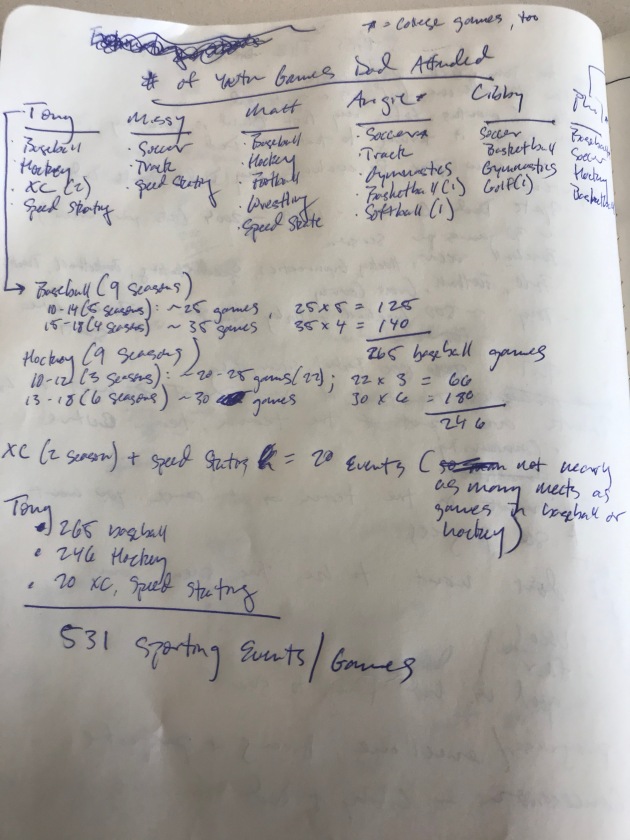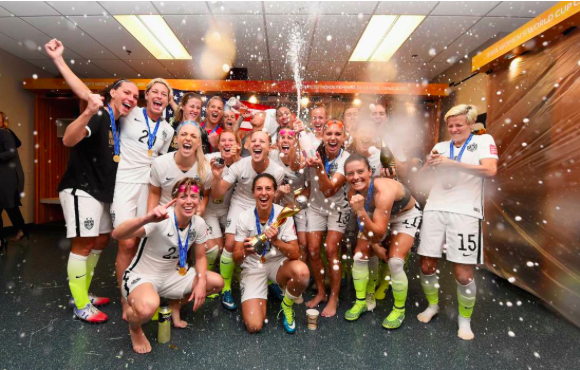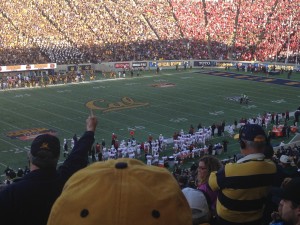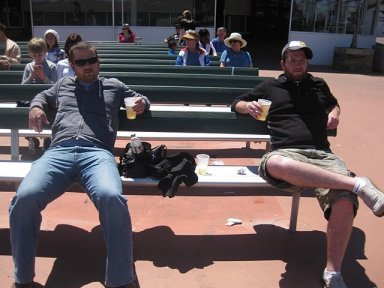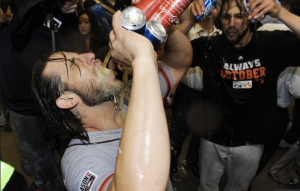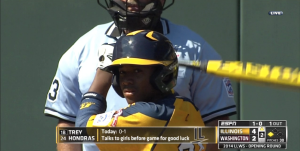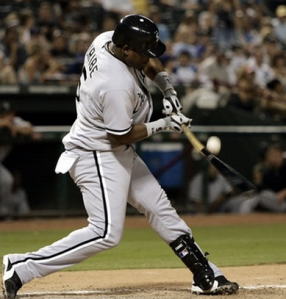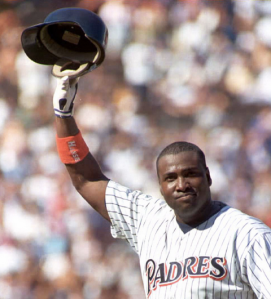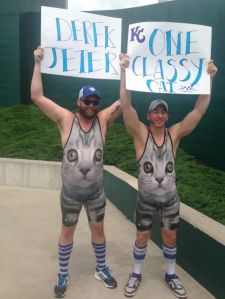County rinks in Minnesota resemble oversized garden sheds. Concrete floors, pitched aluminium roofs, little-to-no insulation. They are cold, the ice is fantastically hard, and voices carry, including my dad’s on occasion.
“Pass the damn puck!”
His voice thundered off the cinder block walls and ice, overwhelming the click-clack of sticks.
Like all dads, mine had a different tone of voice kept in reserve. That ‘enough bullshit’ voice. He went to it sparingly. It was a blunt object, a force used for absolute clarity. The sound of it left me cringing on the bench in its echo. He wasn’t yelling at me, not usually.
Those hockey games were twenty-five years ago and more. How I now measure anything in that length of time is hard to believe, but here we are. Now, my point-of-view is rotating. My wife, Natalie, and I are expecting a little girl in three months. She’ll be our first, and I fill the in-between moments of the day imagining pieces of her life to come.
I know I’m 10 years away from any real sports dad moments, as any game played by kids younger than 10 more closely resembles a chaos theory experiment than any actual sport. I’m pumped for that youth sports phase, to be a sports dad. The thought of it leads back to my dad.
Jim Lang’s run as a sports dad is an all-timer. With some back of napkin math and conservative estimates, it’s fair to say he attended somewhere in the ballpark of 4,560 of his kids’ sporting events over a 24-year run (1980-2004), that comes out to a little more than a game every other day.
Here’s how I got to that number. I started with Tony, the oldest of us kids, and estimated his total amount of games/events played in a sports season, having shorter season game totals for younger ages (10-13), then bumping up for older years. Then I added up the total amount of games I played in (I am the youngest). I assigned the average of Tony’s total and my total for the other four siblings. Everyone played 3 sports when kids, and at least two sports through high school. I added estimated college games for my sister, Angie, and me.
My dad’s attendance record at these games/events is legendary. I said 95% and my brother, Matt, thought that figure was actually low. Put in another way, he remembers the games of his my dad missed, including the first inning of a Little League game in which Matt hit his only home run.
I don’t know how my dad did this while running a business for many of those years. I’m not even counting the 17 grandkids and their games. The man’s put in his 10,000 hours as a sports dad.
Adding numbers is one way to measure sports parenting. Games, years, dollars, miles. God only knows how many miles my dad rolled on the odometer cutting across the metro area to find some random soccer or baseball field behind some random middle school in a suburb across town. Worse yet, out-of-town tourneys. There’s also the emotional investment to consider. That’s not as easy to count or weigh.
Parents are like driving instructors when it comes to their kids’ emotions around sports. They ride shotgun while the kiddos take the wheel. The kids try their best to navigate the highs and lows of the wins and losses, to get the feel for triumphs and slights, all the while mom or dad are ready to take control, slow down, and get everything pointed back in the right direction if things get out of hand.
Game in, game out. Every drive home maneuvering around every bad call, success, substitution; every interaction and how it proved so-and-so really did think such-and-such.
The more I think about it, maybe the teenage years are the emotional equivalent of teaching the kid to drive a stickshift.
—
We’ve all heard a story or two about unhinged sports parents, and I’ve wondered if youth sports have become an outsized focus for many, not to mention a billion dollar industry. Still, youth sports are incredibly important, and not because they allow parents to help their children realize the dreams their mom and dad could’ve realized if only they’d had a stronger parental guide. And while the life lessons are invaluable, there’s a bigger reason why youth sports commandeer so much of us.
In sports, parents witness their kid experience success and failure in public.
Where else in a parent-child relationship is that a more regular occurrence than during youth sports? Where else can a parent watch that play out in real time from the comfort of a folding chair? Algebra tests aren’t exactly a spectator sport, and there aren’t 30 school musicals a season. First kiss, first heartbreak, a nailed or failed summer job interview— all secondhand. Come adulthood, so much success and failure is relayed, discussed with but rarely seen by parents.
We’ve manufactured elaborate ceremonies to celebrate some definition of success. Weddings (love, family), graduations (knowledge), birthdays (not dying), sacraments (spiritual progress), retirement parties (career), funerals even (you know, all of it). These are the recognition of success, but not the act itself. As for failures, we ignore those at pretty much any cost, and have mercy on anyone who experiences failure in public or has them captured on social media.
Success and failure. Success and failure. Over, and again. Those early glimpses of how a child will handle both certainties – it must be immensely vulnerable and captivating to watch how both shape a child.
—
I try to sense the volume of the numbers and emotions of my dad amassed as a sports dad. While us kids were always his priority at those games, he genuinely cared about how the team played. How could he not? He sat through too many games to watch selfish play, timidity, or mental mistakes.
“Pass the damn puck!” There was a lot more beneath those words than my dad simply being fed up with having to watch a kid’s failed attempt at an end-to-end rush for the fifth time in the period. I am only just beginning to feel my little girl kicking in Natalie’s belly, and I still need to learn, uh, everything about being a dad, but am I fool to think I can now understand just a bit of why my dad would yell every now and again?
It wasn’t too much for my dad to suggest the kids play as a team.
Not so long ago, I envisioned myself as the silent dad at my kids games. I’d played and coached enough youth sports to have made the vow so many have made: I would never be the parents losing their shit at the game.
All of us have experienced some version of these parents. They are the ones berating an umpire making $30 a game, the ones who can’t go five seconds without frantically reminding kids of techniques from across the field, the ones openly questioning coaching decisions to anyone within earshot. Nowadays, I’m guessing these are the folks starting chat groups online to talk crap and plot like cowardly teenagers.
Out of fear of becoming one of these idiots, I planned to be the silent dad, and that was a stupid plan.
My best youth sports experience was my baseball team from 13-15. I always appreciated that we had enthusiastic, young coaches (my brother, Tony, and brother in-law, Jay) that connected with the kids. I’m only now fully appreciating how great the families were. Much of the families were the same every year, and while it wasn’t perfect, there was a genuine feeling that parents were pulling for each kid to succeed on the team.
We won a lot, which never hurts, but the sports cliches regained their original meaning in large part because the parents cheered when teamwork, resilience, effort, preparation, competition manifested into great play. They would call it out when those qualities were lacking, too. Compliments were often directed to specific kids, critiques rarely were.
As much as where I was born, those families represent where I grew up. I don’t know where I’ll be living in ten years: here in California, back in Minnesota, or maybe there’s a curveball waiting for us down the line. Wherever we are, the families sitting around us in the bleachers will make up a meaningful part of our community. They will be a part of where my kids are from.
While I won’t threaten my dad’s career numbers, we’re still talking about many games, many miles, many hours, many emotions. If we’re signing up for all of that, then we have to try doing it right. I gotta do my part as a sports dad in helping create an environment where the cliches have meaning. I want to be a parent heaping genuine praise on all the kids when they deserve it, including mine. And for every ten ‘atta boy!’, I want to be part of community that understands yelling “passing the damn puck!” is not an aggression, but preservation.
I don’t want to help build community in which our fear of offending means we avoid making any positive impact on each other. Sports parents can create that environment or ensure it never has a chance.
Of course, my daughter might not even like sports. Those in-between moments I brought up at the beginning of this story? When I think about the pieces of her life, the truth is the vast majority of those won’t include sports. That’s why youth sports have to be about the lessons and the community that helps teach them. About learning how to compete, being a good teammate, celebrating success, collapsing into failure, and waking up the next day moving on from both.
—
I’ll end with one of my favorite stories of my dad as a sports dad. the concession.
My sister, Libby, was a basketball player. A good one, too. She was the only one of us kids who had any skill for that game. Plus, the Langs aren’t in the height business. She was a point guard on the high school team, and played plenty on varsity as a junior. Come her senior year, she was a likely starter, but there was this seventh grade phenom. The coach decided to bring the phenom up to varsity. Libby bore the brunt of it, and rarely played. My dad was upset. Plenty of no b.s. voice when that topic came up in the house.
The phenom was incredible, no question about it. She went on to play and coach at Marquette and now coaches at Penn State. It wasn’t her fault, and it wasn’t about her; my dad couldn’t get past the question as to why a seventh grader had to play varsity, and how that was the reason Libby couldn’t take her final lap as an athlete before going to college (Libby would agree that her participation on the J.V. golf team the following spring was strictly about getting a tan…she played in flip-flops, folks)
Ultimately, there was nothing to be done. The kid was great, coach wanted her playing varsity, and so Libby sat the bench. Who knows what factors were at play—maybe the coach was worried she’d lose a future star player to another school if she didn’t play the 13 year-old right away.
My parents still were there in the stands, even though it was clear how the season would play out. At one game, my dad walked down the bleachers, passed behind the bench and told Libby he was going to the concession stand – did she want a hot dog?
Imagining that moment kills every time. I’m laughing as the write this!
My dad has devoted the entirety of his time on building two legacies: his career and his family. That’s it. That’s the complete list of things Jim Lang cares about. Sports have been a big part of his life because they were important to his kids.
I told my dad about this story last night. His response to when I told him 4,560: “And I enjoyed every one of them.”
My dad relished our sports successes. They made him goddamn giddy. And when the puck ought to be passed, he’d say it. When we failed, he felt it. And if concession was the last option, then he’d give us a laugh as we moved on to the next piece of life waiting for us.
Phil Lang, 02.17.21


